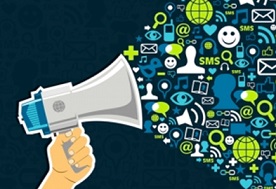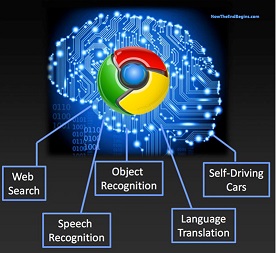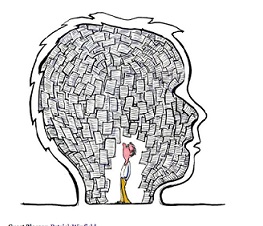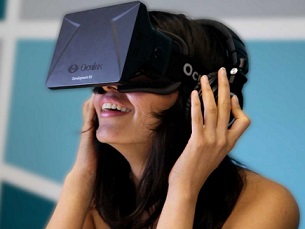
 Gosh how our lives have changed in Just over a decade. Can you even remember a time without Facebook, Whatsapp, Twitter, Instagram or YouTube?
Gosh how our lives have changed in Just over a decade. Can you even remember a time without Facebook, Whatsapp, Twitter, Instagram or YouTube?
Their was a time when you didn’t find out your best friend in college was pregnant on Facebook or connect with colleagues around the globe via a Whatsapp group. Our lives were offline, not revolving around a constant stream of micro content and #selfies.
Facebook has without doubt disrupted and changed the way the world communicates in just over 10 years. Communicating and marketing using social behaviours, triggers and ways of engagement have become paramount to savvy brands wanting to remain relevant to the disparate and discerning consumer base they want and need to reach.
 Social platforms have empowered individuals to voice their opinions, concerns and share content on their mobile devices in ways no one could have imagined. Along the way, geopolitics and the world of business has been radically transformed.
Social platforms have empowered individuals to voice their opinions, concerns and share content on their mobile devices in ways no one could have imagined. Along the way, geopolitics and the world of business has been radically transformed.
We saw the dramatic impact social media wielded four years ago. It was a tool that helped spark the Arab Spring—a democratic civil uprising in the Middle East that began in Tunisia in December 2010 that helped force rulers from power in such countries as Tunisia, Egypt and Libya. Thanks to Twitter and other social media, people were able to protest and raise awareness in the face of repression. The revolution continues.
And social media is becoming how people connect to the internet with 1.3 billion active Facebook users, with 82 percent of them coming from outside the U.S. and Canada.
Twitter has 270 million active users that send 500 million tweets per day.
Each day, 4 billion videos are viewed on YouTube (that’s 46,296 per second) and 60 million photos are uploaded on Instagram.
By 2018 eMarketer believes 2.44 billion of the world’s population will be on social networks. So what does that mean for the future of our business?
Well as I’ve said on previous blogs, Wearables will be big. I believe that our habits, our ‘virtual’ world and experiences will be integrated into what we will call ‘social’. Mobile is the first step towards “portable” social media and how we consume it. Having worked at Google we used to joke that one day we would have a Google chip in the back of our heads. This is not as far fetched as it may seem now.
 Social media will become part of the fabric of our clothes, part of the glasses we wear and the shoes we put on, and the gadgets we no longer see as gadgets but as part of our very selves. Social will measure, but sharing will become more passive in the process; it won’t require any effort on our part to share any part of our lives.
Social media will become part of the fabric of our clothes, part of the glasses we wear and the shoes we put on, and the gadgets we no longer see as gadgets but as part of our very selves. Social will measure, but sharing will become more passive in the process; it won’t require any effort on our part to share any part of our lives.
Data Management will also be key. Already there are signs that we are all suffering what has been called ‘Content Shock’ an overload of information that generates even more information that is simply overwhelming.
There will be more personal ownership of data. Second, individuals will be able to manage data across platforms in a more centralized way. Third, there will be extremely speedy mobile wireless broadband built into even the most affordable devices to allow one-touch and instant playback of any piece of content.
We currently have thermostats that learn our preferences, watches that take our pulse, and Nike even knows how often and how fast we run, and this is just the beginning.
With this much data, personalized content will become the norm. I love unfiltered feeds, but in the future, when the depth of data available meets the ability to make decisions based off of that data, the result will be a very individualized and powerful experience. People will be able to get the content they want, at the time they want, from the people and brands they want, perhaps even on their projector watch or contact lens.
 In terms of sharing our personal experiences. I think you’ll be able to share a taste, a sensation and a smell. I think a shared consciousness and a version of telepathic communication is all very likely.
In terms of sharing our personal experiences. I think you’ll be able to share a taste, a sensation and a smell. I think a shared consciousness and a version of telepathic communication is all very likely.
Having worked on voice to text tech back in the UK I think voice-controlled social media and content input will be ubiquitous by 2020. Holographic displays will be shifting into the mainstream, making the debate between display sizes totally irrelevant.
News
When news breaks in the future, it will be covered by a multitude of eyewitnesses streaming live video. These streams will knit together into a single immersive video, enabling the viewer to virtually experience the event in real time. For better or worse, the world will feel like it’s right around the corner.”
Ads
Social will be less about standalone apps and websites and become an unseen part of the infrastructure around us that we notice only when it’s not present. This will put more pressure on advertisers, marketers, and big thinkers to spread their messages in a genuinely interesting and useful way, since they’ll be less able to rely on interruptive display ads to get people’s attention. But the same trend will also allow these same people to precisely target the exact niche they’re speaking to.
Shopping an e-commerce store with a friend, virtually trying things on your avatar that’s representative of your likeness and conversing in real time with that friend, all while on the go in different places.
We’re already seeing increased personalization, more individual-to-individual communication, more humanlike algorithms and more specified, diverse social platforms. I think those trends will continue in the future. I see more of a divide happening between socializing and publishing via social media, and platforms like Facebook that merge the two will probably need to pick a lane and change significantly
In the future, I will “disconnect” by putting on Oculus virtual reality glasses when I get home—and suddenly I’ll be sitting at Yas Marina with my Facebook friends watching the F1 grand prix or shopping using my Google Glasses. Virtual reality puts you and your community into an immersive world and this will be the next major disruption across education, tourism, travel, business, and healthcare.
Authored by: Ema Linaker Regional Director, Holler/Leo Burnett


